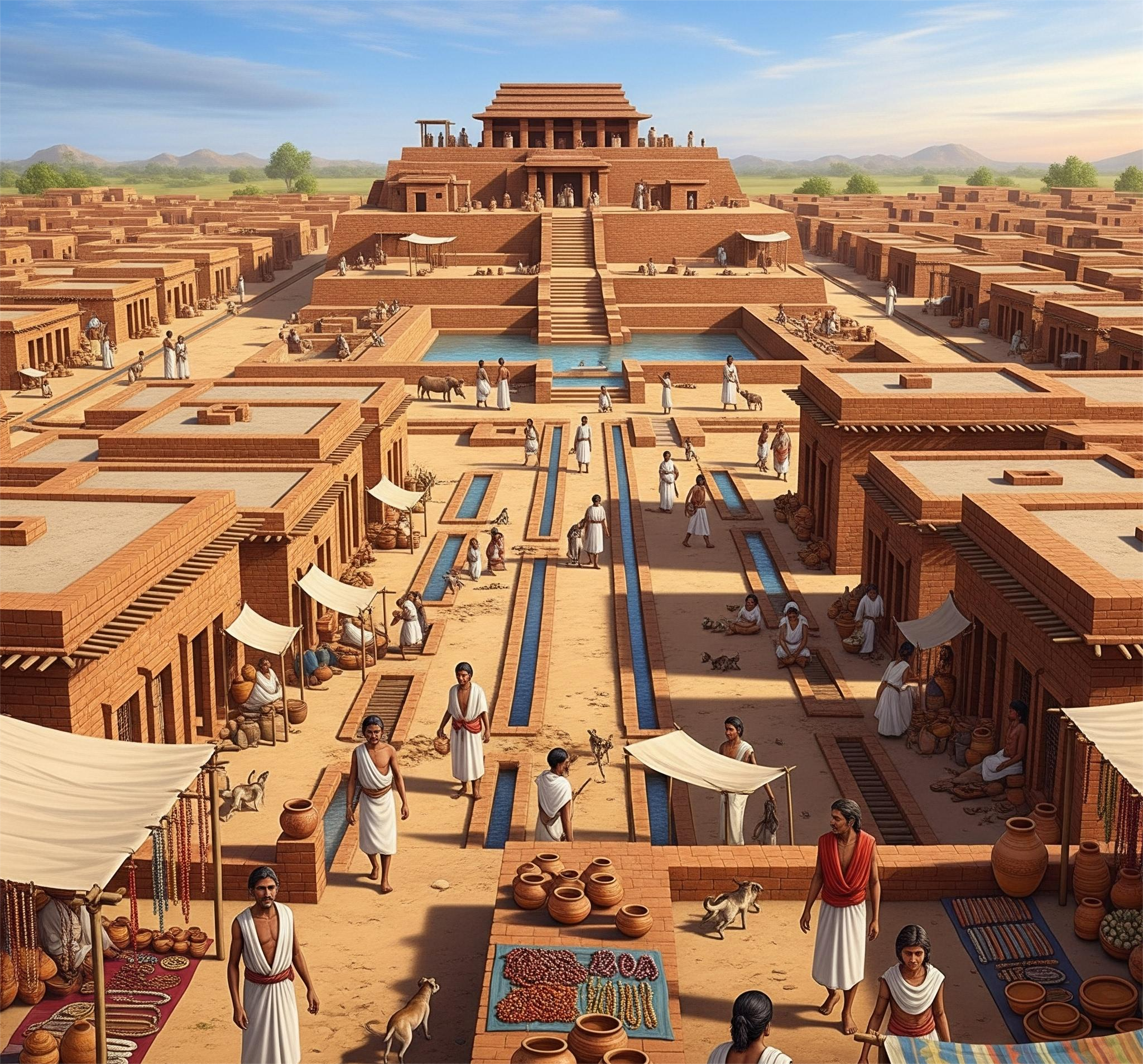Long before the rise of Rome or Athens, the Indus Valley Civilization (c. 2600–1900 BCE) was thriving in what is now Pakistan and northwest India. As one of the world’s earliest urban societies, it astonished archaeologists with its advanced understanding of city planning, sanitation systems, and international trade. While long overshadowed by Egypt and Mesopotamia in popular imagination, the Indus people were quietly building orderly, sustainable, and interconnected cities—a feat millennia ahead of their time.
Planned Cities on a Grid
At a time when most ancient cities grew organically and chaotically, Indus Valley cities like Mohenjo-daro, Harappa, Dholavira, and Lothal stood out for their carefully laid-out street grids, uniform building codes, and centralized authority.
Streets were straight and intersected at right angles, forming a well-organized grid.
Houses were made of standardized baked bricks, suggesting regulation and skilled labor.
Residential, administrative, and industrial areas were often zoned into separate sectors, anticipating modern urban planning practices.
These features point to a centralized, sophisticated government or administrative system that could enforce rules and coordinate large-scale construction.
Sanitation and Public Health
Perhaps the most groundbreaking achievement of the Indus Valley Civilization was its infrastructure for sanitation—possibly the earliest in the world.
Every major house had its own private bathing area and drainage system.
Wastewater was channeled into covered street drains, kept clean through regular maintenance.
Public wells provided clean drinking water, and some cities even had multi-tier reservoirs and rainwater harvesting systems.
This concern for hygiene and public welfare suggests a civic culture that prioritized cleanliness, health, and sustainability—an attitude rarely seen in contemporary ancient societies.
Trade and Economic Integration
The Indus Valley economy thrived on both local and long-distance trade. Its urban design supported commerce, with designated markets, workshops, and granaries.
The city of Lothal, near the Arabian Sea, is believed to have had one of the world’s first known docks.
Trade goods included cotton textiles, beads, pottery, metals, and semiprecious stones, often traded with Mesopotamia and regions of Central Asia.
Uniform weights and measures across the civilization indicate strong economic integration and standardization.
These systems contributed to the civilization’s stability and economic strength, tying urban planning directly to trade efficiency.
Technology and Innovation
Their urban planning was supported by advanced technological and engineering capabilities:
Kilns for brick-making allowed for consistent construction materials.
Use of tools, seals, and standardized weights indicates organized craftsmanship and record-keeping.
The so-called “Great Bath” of Mohenjo-daro remains one of the earliest public water structures—likely used for ritual or communal purposes.
While they left no deciphered written records, the physical remnants of their cities tell a story of innovation and thoughtful design.
A Civilization That Thought Ahead
The Indus Valley’s approach to urban design was not just about aesthetics or efficiency—it was about resilience. Many of its cities were built on elevated platforms to prevent flood damage, and wide streets allowed for air circulation and possibly even traffic management.
Their cities were modular and scalable, able to grow while retaining order. Unlike the monumental architecture of Egypt or Mesopotamia, the Indus people focused on livable, practical urban spaces—a vision strikingly aligned with today’s urban planning priorities.
The Mystery Still Unfolds
Despite their achievements, the Indus Valley Civilization remains enigmatic:
Their script remains undeciphered.
There is little evidence of centralized palaces, royal tombs, or warfare.
Their decline—whether due to environmental change, shifting rivers, or other causes—is still debated.
What’s clear, however, is that they were a highly organized, peaceful, and technologically advanced society whose urban innovations had no equal in the ancient world.







